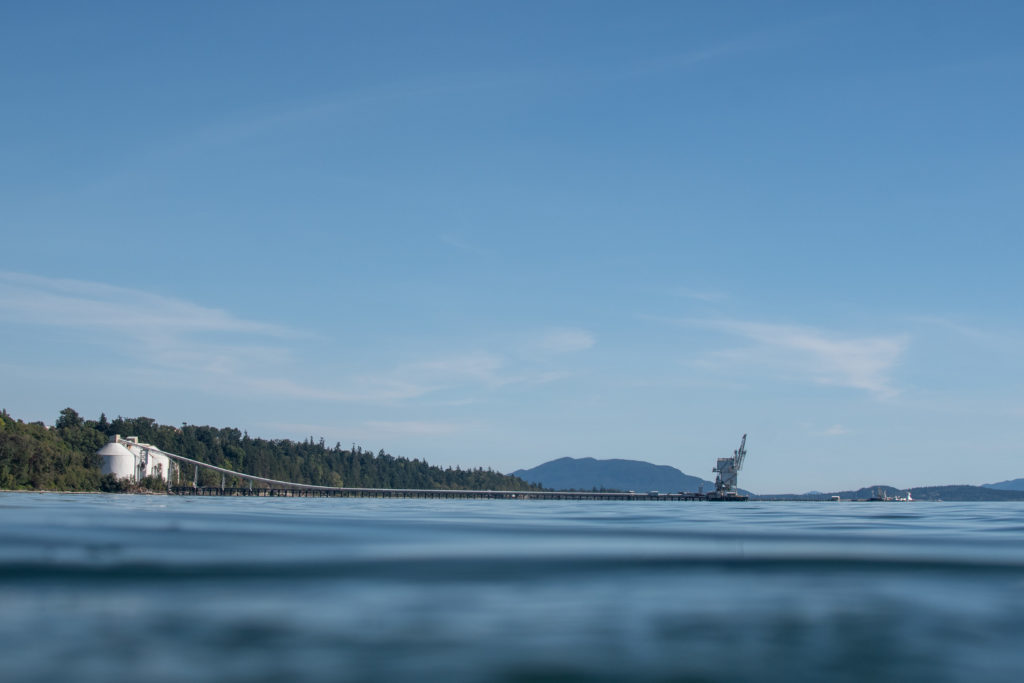The Cherry Point herring stock didn’t spawn at all this year, according to the Washington Department of Fish and Wildlife (WDFW). Scientists and volunteers found no evidence of the spawn, which usually occurs during April and May and is visible from a bird’s-eye view of the Cherry Point Aquatic Reserve. The genetically distinct Cherry Point herring population, which was once the biggest stock in Puget Sound, has declined to less than 9% of its historical levels since the early 1970s. This sharp decline comes amid NOAA’s repeated denials of Endangered Species Act protection for the Cherry Point herring population. But what does this decline mean for the overall health of the Salish Sea?
What’s causing the decline?
There are several possible reasons why herring didn’t appear to spawn this year. They could have migrated north to cooler waters over the Canadian border, spawned in a different area than usual, or simply declined due to negative effects from industries near Cherry Point. Because herring spawn in shallow, coastal habitats, nearshore degradation issues such as sediment buildup and nutrient imbalances from industrial runoff can make their spawning grounds less viable. However, all is not lost: other herring stocks in the region, including populations at Fidalgo Bay and Semiahmoo Bay, are increasing. The decline in the Cherry Point stock doesn’t spell immediate disaster, but it is definitely a point of concern for the overall health of the Salish Sea ecosystem.

Why do herring matter?
Herring occupy an essential ecological niche that many diverse life forms depend on. Pacific herring are a type of forage fish: their small size and quick reproductive rates make them an ideal food source for many larger fish species, seabirds, and other animals, like the orcas and seals we love spotting in the bay. A decline in herring populations creates a ripple effect, leaving a gap in the Salish Sea food web and destabilizing the health of our region’s marine wildlife as a whole.
Wildlife recovery efforts in our local waterways are inextricably connected to the health of the Salish Sea and to us land dwellers. Shoreline development and industrial contamination have destructive repercussions throughout the Salish Sea food web and through our community. Water quality issues can hinder the health of kelp forests and eelgrass meadows in the North Puget Sound and central Salish Sea, which provide essential spawning grounds for herring (not to mention carbon capture!).
These areas provide safe harbor and food for thousands of species of invertebrates and fish, and also provide protection from intense waves and ocean acidification, which can negatively affect herring eggs. When kelp and eelgrass struggle, so do herring stocks, which means less food for salmon, who eat herring during their time in the ocean to gain the strength necessary to make the return trip to their spawning grounds. Salmon population health in turn diminishes the diet of the threatened Southern Resident orca population, and so on, and so on.

What can you do?
You can take action to protect the Salish Sea by engaging in community science efforts through our North Sound Stewards program, which monitors the health of local marine habitats. There you’ll find community, fun, and the opportunity to collect vital information that directly helps the Salish Sea. You can also find out more about our state Aquatic Reserve Program and support the work of the Cherry Point Aquatic Reserve Citizen Stewardship Committee here.
Want to engage in everyday community science on trips around town or even on your daily commute? Download the Water Reporter app, which allows you to snap a photo of any pollution you see in a local marine area, lake, river, or stream, and share it with our staff. For more details, see our guide for how to spot pollution. Not able to use the app? Instead, report pollution with a call or text the Pollution Prevention Hotline: (360) 220-0556.
